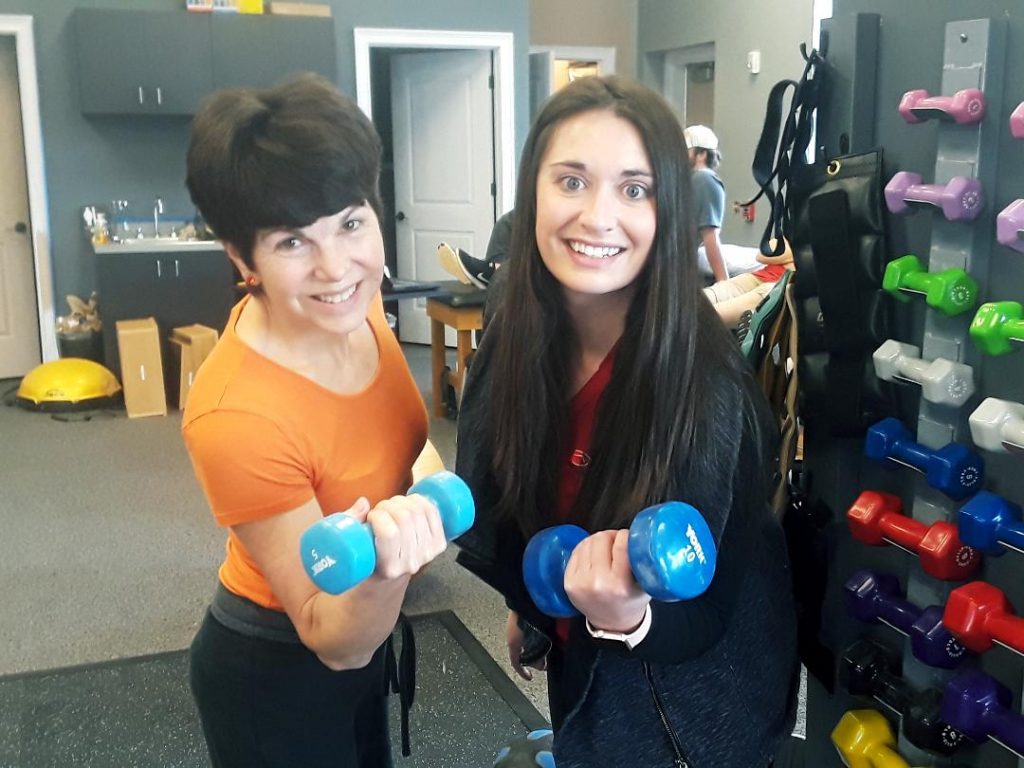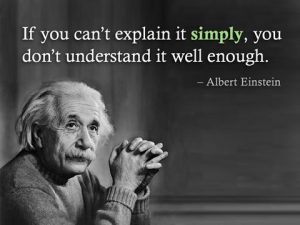
I had my first experience with physical therapy recently. It really opened my eyes to the hard job of working on one thing that impacts a larger system. I’m talking about the hamstring on my left leg that has really been bothering me.
According to Wikipedia, the “hamstring is one of the three posterior thigh muscles in between the hip and the knee. Hamstrings play a crucial role in many daily activities such as walking, running, jumping, and controlling some movement in the trunk. In walking, they are most important as an antagonist to the quadriceps in the deceleration of knee extension.” And they are “quite susceptible to injury.”
I first began experiencing intense shooting pains and a feeling of “lock up” in and around my knee. And that was simply from sitting on the floor with both of my legs crossed (one my favorite resting positions). Then the pain began to migrate to the area behind and just above my knee, and that feeling was even more concerning. I was starting to worry that maybe it was a blood clot. During my annual physical with my doctor, she ruled out a blood clot and felt it was probably a muscle injury and continuing aggravation. Most likely this injury occurred when I enthusiastically returned to my yoga practice and fitness program at the beginning of the new year. My primary doctor referred me to ATI Physical Therapy. And that is where I met the amazing Kaitlin Sloop, PT, DPT.

After a few sessions my admiration for Kaitlin has grown, but so has my displeasure. You see, this physical therapist can inflict short term discomfort, even pain during our therapy sessions. I know her intention is to relieve the pain, loosen the tension and strength my muscle. It’s physical therapy after all, not a massage. When something is broken or injured we need to work hard to restore it to full functionality. Looking around the ATI physical therapy office, I see other patients who have many more challenges and a longer road to recovery. What am I complaining about? Just do the work!
Communication Therapy
While I was face down on the table at ATI physical therapy doing some weird movement repeatedly until it hurt, I got to thinking. Is there such a thing as communication therapy? Can we do the equivalent of strengthening our communication muscles? If so, what would that look like?
With so many moving parts to communication, how could one isolate each communication muscle and give it a purposeful workout in order to strengthen it? What happens when we slip into long periods of sloth-like behavior–unconscious, unaware and not caring about how we communicate with others. There’s a real parallel here: how we take for granted our physical bodies (e.g., bad eating habits, tons of stress, unhealthy behaviors, lack of exercise) and how we take for granted the impact of our communication (e.g., talking before we think, tweeting before we think, being reactive in our communications, saying negative and hurtful things, name calling, cursing, etc.). But maybe we can wake up and make some changes to how we communicate… before we cause pain and suffering.
Seven Ways to Strengthen Your (Communication) Muscles
- Give it a Rest. Giving our overused muscles a rest is a good thing to do. How do we rest our communication muscles? We use silence. We practice listening. We don’t have to dominate the conversation. We grow and strengthen our organizations by inviting other people’s s voices, ideas and opinions, not just forcing ours.
- Repetition. We focus our strengthening exercises on certain muscles group. We do multiple sets of repeated exercises. Pick a simple message and send it several times. People need to hear something 6-9 times in order to remember it. Repetition in messaging is a strength, not a weakness.
 Simplicity. We use simple equipment and simple motions to help strengthen our muscle groups (resistance bands, balls, mats, light weights). Movements are small, slow, focused and purposeful. We can take the same approach with communication. Rather than trying to acquire the latest greatest hardware, software, technology, app, or social media site, you could just pick up the old fashioned telephone and call someone to communicate. Better yet, you could walk over to your colleague’s cubical and have a short conversation (and get more exercise!). Also, don’t use complex language or hard to understand words, or confusing acronyms when you communicate. Simple language and easy to understand words are best to use when communicating with others. You are not dumbing it down, you are making your communication more accessible.
Simplicity. We use simple equipment and simple motions to help strengthen our muscle groups (resistance bands, balls, mats, light weights). Movements are small, slow, focused and purposeful. We can take the same approach with communication. Rather than trying to acquire the latest greatest hardware, software, technology, app, or social media site, you could just pick up the old fashioned telephone and call someone to communicate. Better yet, you could walk over to your colleague’s cubical and have a short conversation (and get more exercise!). Also, don’t use complex language or hard to understand words, or confusing acronyms when you communicate. Simple language and easy to understand words are best to use when communicating with others. You are not dumbing it down, you are making your communication more accessible.- Lighten It Up. When we exercise, it’s unwise to use heavier weights than you can handle. Very few of us are bodybuilders. If you find yourself wanting to show off or to prove a point by lifting more weight than you are ready for, beware: you could rip, tear or severely injure yourself and be out for months. From a communication point of view, we can lighten up by adding appropriate humor and levity to our communication. I recently got to see Neurohumorist and author Karyn Buxman give a talk at a business conference. Her current book, Lead with Levity: Strategy Humor for Leaders, is very funny and practical. She is working on a new book called Funny Means Money. She offers scientific proof (and tons of emotional joy) that humor is an effective communication strategy. It not only works in business, it works in life. Watch her talk on TEDx.
- Focus. Muscle strengthening occurs when we focus on a particular muscle or muscle group. Isolating exercises for muscles is a common workout practice. From a communication point of view, focus might look like selecting one key point for each communication, or one specific ask for each discussion, or one idea for each PowerPoint slide you plan to show (not 10 ideas in one slide). Focus your communication on one person at a time. Avoid emailing to large groups of people. And for goodness sakes, please not use the “Reply All” feature on email. That drives me crazy!
- Practice. Fitness and exercise need to become part of your lifestyle. It is a practice that you develop, not a new years resolution that you throw yourself into, only to quit weeks later. It’s not about short term weight loss; it’s about long term wellness. Same is true for communication. It’s a practice, and you need to practice. Literally, you need to practice. If you have an important presentation coming up, schedule a dry run through and a mock presentation. If you are doing a media interview, write out your talking points and schedule a ‘hot seat” practice session where colleagues throw hard questions at you and you practice responding in a calm, respectful, non-defensive fashion while staying on message. If you have an important meeting coming up, draft and practice vocalizing your opening remarks in advance. Audio /video record it and play it back so you can self-assess. Practicing your communication needs to be more than just thinking about it in your head. You need to practice your communication with your body, mind and spirit.
- Consult a professional. If you are experiencing constant or prolonged pain and it is impeding your daily tasks and mobility, don’t assume it will go away by itself or magically return to normal. Call your doctor, make an appointment, figure out what the root cause of the problem is. Discuss solution options and create a treatment plan to correct the problem. The same holds true for communication pain and problems. If you keep doing the same thing over and over again, you are likely to exasperate the situation, not improve it. Communication is a form of mastery: we are always working on it. You are never too experienced to learn something new about communication; never too senior level to attend a training program (online or live classroom). And never too good to be better. Find out what types of communication programs and courses your organization offers (or your local library, or courses online). Sign up. Show up. Skill up. Communication is the great differentiator. It can make or break your career.
I need to finish this blog post because I have an 8am appointment tomorrow with my physical therapist, Kaitlin. She’s going to put me through the ringer again. I need to be rested and ready to strengthen my muscles. Perhaps I’ll even think of an idea from my next blog post? My mind does like to wander…

